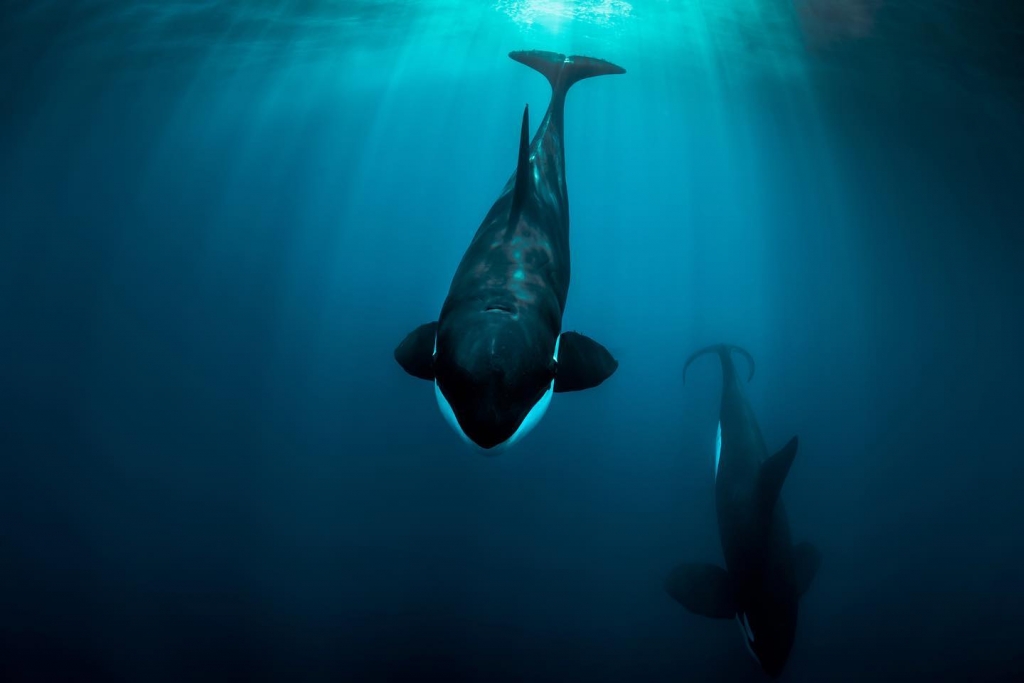Orcas, also known as killer whales are the largest members of the dolphin family. They stand out in the water because of their distinctive black-and-white coloring. These smart marine mammals belong to tightly-knit families. Together they outwit, outmaneuver, and outlast their prey. Join our Baja Shark Expeditions for a chance to see these intelligent and beautiful creatures reign supreme underwater.

Powerful predators
Orcas are one of the world’s most powerful predators. They are very intelligent mammals and effective killers. With impressive hunting techniques, orcas like to hunt in pods or groups consisting of up to 40 killer whales. One of their admirable qualities is having strong family bonds which double as a hunting advantage. The orcas work together with their family members to conquer their prey. Their hunting behavior has been likened to that of wolf packs that cooperate to bring down prey.
There are resident pods and transient pods of killer whales. Resident pods usually like to target fish while transients pods have a preference for marine mammals.
Collaborative hunting
These formidable hunters will not back down from hunting larger whale species. In fact, they are known to attack gray whales, sperm whales, and even blue whales. Orcas look forward to the yearly migration of gray whales on the west coasts of North America and Mexico. Killer whales also like to hunt other mammals such as seals, sea lions, and fur seals. In some regions like Argentina, orcas have learned beaching techniques to grab seals nearby. They nab a seal by the neck and drag it back in the water. Older killer whales have been recorded teaching this technique to younger members. In icy waters like Antarctica, orcas have learned the ingenious method of creating waves to knock seals and penguins off the ice into their waiting mouths.
Social creatures
Killer whales are social creatures and they make different sounds to communicate with one another. It’s amazing how each pod makes unique noises. Even at a distance, their family members can recognize the distinct sounds.
Orcas like dolphins use echolocation to navigate, hunt, and identify objects that they encounter. They make sounds that travel underwater to determine the location of marine objects. When the sound hits an object and bounces back, it reveals the location, size, and shape of the object. This comes in handy when hunting for food, distinguishing friends from foes, and avoiding obstacles.
Reproduction
Male orcas reach sexual maturity faster than females. Males become sexually mature around 13 years old while females around 15 years old. Mothers give birth every three to ten years. Orcas have a long gestation period of 17 months. The mother orca gives birth to one calf at a time which she may nurse up to two years. Sometimes the juvenile killer whale stays with the pod it was born into or go its own way.
See orcas up close
Baja Shark Experience’s Custom Expeditions are perfect for professionals and private groups that want tailor-made trips. It’s ideal for trips focused on marine life encounters including orcas. Hope to see you on our next marine adventure.
